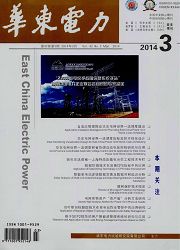

 中文摘要:
中文摘要:
在保证电网火电总负荷不变及火力发电量总量不变的情况下,根据节能调度基本思想,以能耗最低为约束目标,重新分配各火电机组负荷,并在合理范围内调整各机组利用小时数,从而改变各机组发电量。通过模拟在不同负荷水平下的机组单位煤耗,以及在计划调度与节能调度下的各机组发电量,分别计算出各机组总的煤耗水平。通过比较两种调度方式下,总的煤耗及污染物排放变化情况,分析节能调度的节能减排效果。
 英文摘要:
英文摘要:
Under the circumstance of ensuring the total load and total electricity generation of thermal power plants in the grid unchanged, the loads for each unit were redistributed and the utilization hours of each unit were adjusted within a reasonable range with the aim at the minimum coal consumption according to the principle of energy-saving dispatching. As a result the electricity generation from each unit was changed. The total coal consumption of each unit was calculated respectively through simulating its coal consumption under different load levels and calculating its electricity generation under both the planned dispatching and the energy-saving dispatching. Consequently, the effect of energy-saving dispatching on energy saving and emission reduction was analyzed by comparing the variations of total coal consumption and pollutant emissions between the two dispatching methods.
 同期刊论文项目
同期刊论文项目
 同项目期刊论文
同项目期刊论文
 Research on parameter design of competitive generation markets based on dynamic simulation and cloud
Research on parameter design of competitive generation markets based on dynamic simulation and cloud 期刊信息
期刊信息
